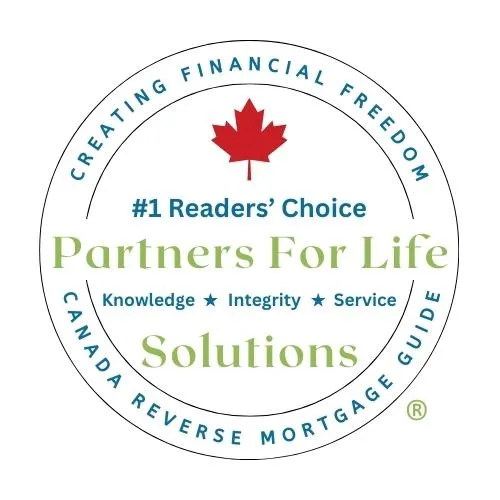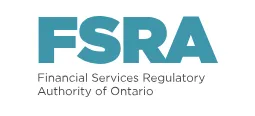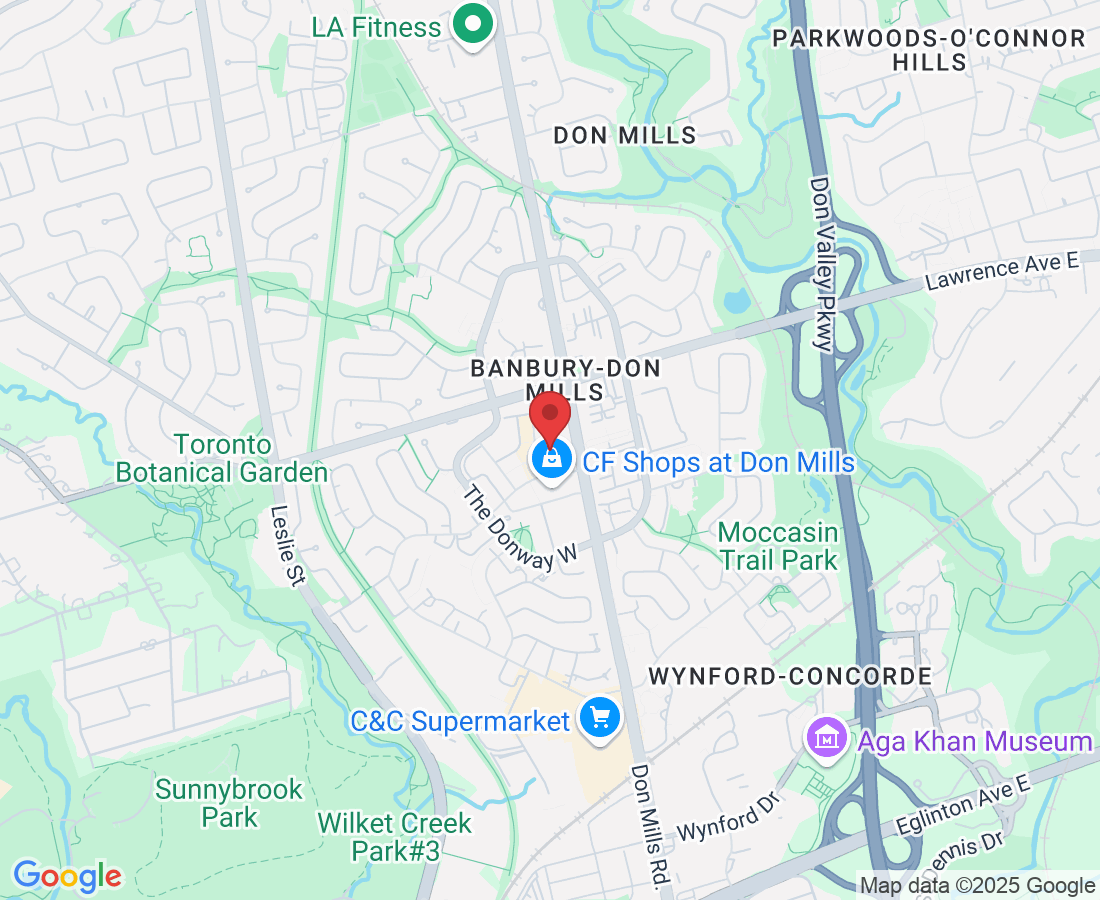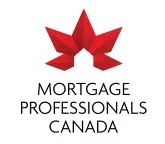
Call: 416-908-2070
Email: [email protected]
Reverse Mortgage

FREE CANADA REVERSE MORTGAGE GUIDE.
This Retirement Strategy is Game-Changing!
As a retiree and homeowner, you are fortunate to have built equity over the years. However, even owning a home may not be enough to shield you from the rising costs and financial challenges that many retirees face today.
We understand that retirement should be a time of security and peace of mind. If you’re facing financial challenges, let’s talk about solutions tailored specifically to help you thrive. Whether it's reducing debt, improving cash flow, or securing the care you need, there are ways to build a more financially stable future in retirement.
Seniors are using the Strategies found in this Interactive eBook to give themselves an edge in achieving a financially secure retirement in just 21 Days.
Our comprehensive eBook offers the latest insights and strategies for integrating reverse mortgages into a responsible and effective retirement plan.
Discover how this powerful tool can boost your financial security, improve your quality of life, and leave a lasting legacy for your loved ones.
Download now to transform your retirement planning and secure a brighter future!
We Respect Your Privacy - No Sales Calls
See why Retirees are Praising this Revolutionary Retirement eBook.
Get Pre-Approved
THOUSANDS OF HOMEOWNERS AGE 55 OR OLDER HAVE REVERSE MORTGAGES
WE SHOP THE BEST REVERSE MORTGAGE PROVIDER
GET YOUR FREE NO-OBLIGATION PRE-APPROVAL TO FIND OUT HOW MUCH YOU QUALIFY FOR.

Easy To Qualify
NO MORTGAGE PAYMENTS EVER!
IMPROVE YOUR HOUSEHOLD CASH FLOW TO ENJOY A BETTER AND STRESS FREE LIFESTYLE
APPROVAL BASED ON HOME EQUITY ONLY
INCOME OR GOOD ENOUGH CREDIT? DOESN’T MATTER
HOME EQUITY LOAN – REVERSE MORTGAGE
GUARANTEED & DESIGNED TO HELP HOMEOWNERS AGE 55 OR OLDER
BETTER THAN ANY HOME EQUITY LINE OF CREDIT
GET FRIENDLY UNBIASED OPINION FROM A LICENSED REVERSE MORTGAGE BROKER!
Got Questions?
SPEAK TO
FRIENDLY & HELPFUL
MATTHEW HINES

Canada’s Expert
PROVIDING UNBIASED OPINION
TO IMPROVE YOUR LIFESTYLE, INCOME AND HAPPINESS
416-908-2070
Discover the Power of a Reverse Mortgage!
Access Up to 55% of Your Home Equity
Homeowners in Canada aged 55+ can tap into their home equity with a reverse mortgage, unlocking up to 55% (up to 65% in some circumstances) of their home’s value. No monthly payments are required, and the loan only needs to be repaid when you sell your home, move out permanently, or the last survivor passes away.
What a Reverse Mortgage REALLY IS
A reverse mortgage is more than just a loan; it’s a financial tool that provides added security and flexibility for retirees. When used correctly, it can be a game-changer, offering an edge in achieving financial stability. Boost your financial security, enhance your quality of life, and ensure a lasting legacy for your loved ones.
Versatile and Tax-Free Funds
You can use the money from a reverse mortgage for any purpose, whether it’s a lump sum, installments, or a combination. Best of all, the funds you receive are tax-free. Receive tax-free funds from your home’s equity to cover expenses like debt, renovations, or day-to-day costs, without impacting your government benefits.
Beyond CHIP Reverse Mortgage
Most people have heard of the CHIP Reverse Mortgage offered by HomeEquity Bank, but there are other lenders out there as well.
No More Mortgage Payments
Enjoy the freedom of being mortgage payment-free. A reverse mortgage allows you to stop making monthly payments while still owning your home.
Flexible Financial Options
Choose how to receive your funds—whether as a lump sum, occasionally as needed, scheduled monthly payments, or a combination — based on your financial needs and goals.
Preserve Home Ownership
Keep full ownership of your home while living in it, with the flexibility to sell or refinance at any time. You maintain control over your property and equity growth.
Secure Your Future and Legacy
Reverse mortgages allow you to live comfortably and potentially pass on wealth to your heirs by leveraging home equity to build a tax-free savings plan or fund an early inheritance.
Stay in Your Home for Life
With a reverse mortgage, you are guaranteed the right to live in your home for as long as you wish, or until the last surviving homeowner passes away, without fear of eviction or foreclosure.
No Credit or Income Requirements
Unlike traditional loans, reverse mortgages don’t require proof of income or creditworthiness, making them accessible for retirees with limited financial resources.
Protect Against Market Fluctuations
Reverse mortgages provide a steady source of income that isn’t affected by stock market volatility, ensuring stability and peace of mind during retirement.
Preserve Investments
A reverse mortgage allows you to tap into home equity without having to liquidate your other retirement savings or investments, helping to protect your financial future.
Eliminate High-Interest Debt
A reverse mortgage can help you pay off high-interest credit card debt or other loans, improving your financial situation by lowering your monthly expenses.
Flexible Repayment Options
You are in control of repayment. You can choose to make no payments, partial payments, or full interest payments, giving you flexibility based on your financial situation.
No Impact on Government Benefits
Reverse mortgage proceeds do not affect eligibility for Canadian government benefits like CPP, OAS, GIS, or other pensions, allowing you to maintain your full entitlements.
Enjoy a Better Quality of Life
Use the additional cash flow to improve your lifestyle—travel, pursue hobbies, or engage in social activities that may have previously been out of reach.
Reverse Mortgage Learning Centre
In-depth articles, written by our in-house experts that help you understand everything you need to know about Reverse Mortgages in Canada.

Downsizing vs. Reverse Mortgage
Downsizing vs Reverse Mortgage: Which Retirement Strategy Maximizes Your Wealth?
For retired Canadian homeowners, the home is often a key part of their financial security. Rising real estate values have and continue to offer significant equity that can be tapped into, but the question remains: should you downsize or consider a reverse mortgage to unlock this value? While downsizing can seem like an attractive option, it's important to fully understand the financial and lifestyle implications of selling your home, whether you choose to rent or buy a smaller property.
Here's a breakdown:
Selling and Renting: Provides short-term flexibility but comes with rising rental costs, lack of control, and loss of home equity.
Selling and Buying a Smaller Home: Offers homeownership but incurs significant transaction costs and may still require a mortgage.
Staying in Your Home with a Reverse Mortgage: Allows you to access tax-free home equity while maintaining stability and avoiding monthly payments.
Selling and Using a Reverse Mortgage on a New Property: Enables a fresh start in a new home without traditional mortgage payments while keeping financial flexibility.
Let's explore these options in detail.
In order to examine these options appropriately we are going to make the following assumptions:
Sale Price of current home - $1,200,000
Purchase Price of new home - $700,000 (Condo or Townhome)
Current Mortgage or HELOC balance - $240,000
The current age of both homeowners - 69
Option 1: Selling and Renting – The True Costs and Risks
At first glance, selling your home and renting may seem like a simple way to free up cash and reduce maintenance responsibilities. However, there are significant costs and risks to consider.
Cost of Selling Your Home
Selling your home isn't free. There are substantial costs involved, including:
Sale Price of current home - $1,200,000
Real estate agent commissions – Typically 5% of the sale price. For a $1.2 million home, this amounts to $60,000 plus HST ($7,800 in Ontario).
Paying off existing mortgage or debts – If you owe $240,000, this must be paid from the sale proceeds.
Legal fees & Closing costs – Typically around $3,000.
Moving expenses – Professional movers. For this example we will use $3,000
Other potential expenses
Potential capital gains taxes – If the property is not your primary residence, or ever had a rental component, tax implications could reduce your profits.
Mortgage payout penalties – If you still have a mortgage, there could be penalties for early repayment.
Temporary accommodations, and storage fees
After selling and paying expenses you would be left with approximately $886,200
Renting Costs & Risks
Once you've sold your home, you'll need to rent a new place. Renting may provide short-term flexibility, but it comes with financial and personal risks:
Rising rental costs – Unlike a fixed mortgage, rent can increase annually, sometimes significantly. (Current Rents for a Condo or Townhome can start at $2,500 per month - that’s $30,000 per year or $150,000 over 5 years).
Lack of control – You are subject to the landlord’s rules and potential policy changes.
Risk of eviction – Landlords can sell the property, forcing you to move. You may also face "renovictions," where landlords force tenants out to renovate and re-rent at higher rates.
No long-term security – As you age, moving can become increasingly difficult. Losing your rental due to external factors can be stressful and disruptive.
Loss of home equity – Once you sell, your equity is no longer growing, and you're using liquid assets to pay rent, which can deplete your retirement savings over time.
Additional moving costs – If forced to move multiple times due to rent hikes or landlord decisions, additional expenses for relocation, deposits, and setup fees can accumulate.
Option 2: Selling and Buying a Smaller Home
Another downsizing option is selling your current home and purchasing a smaller, more manageable property. While this can reduce maintenance and utility costs, it may not be as financially beneficial as expected.
Costs of Selling and Buying
Sale Price of current home - $1,200,000
Real estate agent commissions – Typically 5% of the sale price. For a $1.2 million home, this amounts to $60,000 plus HST ($7,800 in Ontario).
Paying off existing mortgage or debts – If you owe $240,000, this must be paid from the sale proceeds.
Legal fees & Closing costs for the Sale – Typically around $3,000.
Moving expenses – Professional movers can range from $2,000–$5,000 depending on the move. For this example we will use $3,000
Land transfer taxes – In Ontario, for example, a home purchased for $700,000 could incur $10,475 and in Toronto an additional $10,475 land transfer taxes.
Legal fees & Closing costs for the Purchase – Around $3,000.
Home inspections and appraisals – Typically $500–$1,000.
Moving expenses – Can range from $2,000–$5,000 depending on the move.
Other potential expenses
Home renovations and furnishing costs – A new home may require modifications, furniture, or repairs to suit your needs.
Market fluctuations – If property values rise after you sell, you may find yourself priced out of desirable areas.
New mortgage payments – If the proceeds from your sale are insufficient to purchase a new home outright, you may need to take on a new mortgage, adding financial strain in retirement.
Potential capital gains taxes – If the property is not your primary residence, or ever had a rental component, tax implications could reduce your profits.
Mortgage payout penalties – If you still have a mortgage, there could be penalties for early repayment.
Temporary accommodations, and storage fees
After selling, buying and paying expenses you would be left with approximately $172,000
Option 3: Staying in Your Home with a Reverse Mortgage
For those who prefer to remain in their current home, a reverse mortgage can be a viable alternative. This financial product allows homeowners 55 and older to access up to 55% of their home equity without making monthly payments. Here’s why it might be a better option:
Costs of Staying in Your Home with a Reverse Mortgage
Reverse mortgage setup costs – Includes appraisal fees, legal fees and administration fees. Averages between $2,500 and $3,500
Paying off existing mortgage or debts – If you owe $240,000, this must be paid from the reverse mortgage proceeds.
At 67 years of age and a home value of $1,200,000 you could qualify for a Reverse Mortgage up of $528,000
Other potential expenses
Mortgage payout penalties – If you still have a mortgage, there could be penalties for early repayment.
Financial Benefits
No monthly mortgage or rent payments – Unlike renting or buying, a reverse mortgage does not require regular payments, freeing up cash flow.
You keep ownership of your home – You can stay in your home as long as you like, with no risk of eviction due to a landlord's decisions.
Access to tax-free funds – The money you receive from a reverse mortgage is tax-free and can be used for any purpose, such as covering living expenses, medical costs, or home renovations.
Potential home appreciation – Your property may continue to increase in value, allowing you to leave a larger estate for your heirs.
Lifestyle Benefits
Stay in familiar surroundings – Avoid the stress and emotional toll of moving.
Maintain stability – Aging in place can be beneficial for mental well-being and social connections.
No need to downsize belongings – Moving to a smaller home often requires parting with cherished possessions.
No more Mortgage and debt payments. Any funds previously used for mortgage and debt payments is now free cash flow for you to use however you wish.
After paying your current mortgage and expenses you would be left with approximately $284,500
The best part, you have options with how to access the remaining $284,500:
Take it in one lump-sum payment
Draw it down as necessary - similar to a Home Equity Line of Credit
Get it as a monthly income supplement - Example, $2,000 per month deposited to your account for the next approximate 12 years.
Option 4: Selling and Getting a Reverse Mortgage on a New Property
For homeowners who want to move but don’t want the financial burden of a traditional mortgage, another option is to sell their current home and use a reverse mortgage on the new property.
How It Works
You sell your home and use the proceeds to purchase a new home outright or with a reverse mortgage to cover part of the cost.
The reverse mortgage allows you to live in the new home without making monthly payments.
You retain ownership of your new home while accessing tax-free equity.
Costs to Consider
Sell Current Home for $1.2 million
Purchase New Home for $700,000
Paying off existing mortgage or debts – If you owe $240,000, this must be paid from the sale proceeds.
Land transfer taxes – In Ontario, for example, a home purchased for $700,000 could incur $10,475 and in Toronto an additional $10,475 land transfer taxes.
Legal fees for sale– Around $3,000.
Legal fees for purchase – Around $3,000.
Reverse mortgage setup costs – Includes appraisal fees, legal fees and administration fees. Averages between $2,500 and $3,500
At 67 years of age and a home value of $700,000 you could qualify for a Reverse Mortgage up of $308,000
Other potential expenses
Home adaptation costs – If the new home needs modifications for accessibility, this may be an additional expense.
After paying your current mortgage and expenses you would be left with approximately $172,00. Add to that the reverse mortgage proceeds of $308,000 would leave you with $482,000.
The best part, you have options with how to access the remaining $308,000:
Take it in one lump-sum payment.
Draw it down as necessary - similar to a Home Equity Line of Credit
Get it as a monthly income supplement - Example, $2,000 per month deposited to your account for the next approximate 13 years.
What could you do with the $482,000:
Provide an early inheritance
Contribute to your TFSA account (to take advantage of unused contribution room) for tax-free investment growth and withdrawals
Create an emergency fund for future home repairs - Roof, Furnace etc.
Supplement your retirement income
Create an RESP account(s) for grandchildren
Consulting with a competent financial advisor can unlock a myriad of ways to protect and grow those funds overtime and even create a financial legacy that can transcend generations.
Summary
Every retiree’s situation is different, but it's essential to weigh all the costs and risks before deciding to downsize. Selling and renting may offer short-term flexibility but comes with long-term uncertainty. Selling and buying may seem logical, but the expenses can quickly erode your savings. Staying in your home with a reverse mortgage allows you to maintain stability and financial security while tapping into your home equity. Selling and using a reverse mortgage on a new home offers a middle ground for those who want to move but don’t want traditional mortgage payments.
Which Option is Right for You?
Selling and Renting: Could net you $886,000 - provides flexibility but comes with rising costs and uncertainty.
Selling and Buying a Smaller Home: Could net you $172,000 - Offers homeownership but can erode savings through transaction costs.
Staying in Your Home with a Reverse Mortgage: Could net you $284,000 - Allows you to access tax-free home equity while maintaining stability and offers financial security while allowing you to remain in your home.
Selling and Using a Reverse Mortgage on a New Property: Could net you $482,000 - Enables a fresh start in a new home without traditional mortgage payments while keeping financial flexibility.
Before making a decision, consider speaking with a mortgage professional who specializes in reverse mortgages. They can help you understand how much equity you can access and whether it makes sense for your retirement goals.
Ready to explore your options:
Book a call with me to talk out your options to see if a Reverse Mortgage is appropriate for your unique situation.
Get Pre-Approved - Find out exactly how much you qualify for.
Want to know more about Reverse Mortgage - Download a copy of our Free eBook, the Canada Reverse Mortgage Guide.
Choosing the right option requires careful planning, but with the right knowledge, you can secure a comfortable and financially stable retirement.
STILL NOT SURE?
Frequently Asked Questions
Find answers to common questions we receive about Reverse Mortgages in Canada
What is a reverse mortgage, and how does it work?
A reverse mortgage allows Canadian homeowners aged 55+ to access a portion of their home’s equity as tax-free cash—without making monthly mortgage payments. The loan is repaid when you sell your home, move out, or pass away.
Do I still own my home?
Yes! You remain the owner, and you can live in your home for as long as you like, provided you meet the loan conditions (such as paying property taxes and insurance and maintaining the home). It is just a mortgage. When you first purchased your home and you received a loan from your bank, you did not give up ownership of your home. It is the same with a reverse mortgage.
How much money can I receive?
The amount depends on your age, home value, type of home, location, and lender. Generally, the older you are and the more your home is worth, the more you can borrow. To find out how much you could borrow, request a no-obligation pre-approval.
Do I need to make monthly payments?
No. One of the biggest advantages of a reverse mortgage is that you don’t have to make monthly payments. The loan balance grows over time, and it is repaid when you sell your home or pass away.
Will my children or heirs inherit my home?
Yes, your home can still be passed on to your heirs. However, they will need to repay the reverse mortgage balance, usually by selling the home or using other funds. Any remaining home equity belongs to them.
What are the costs of a reverse mortgage?
While there are no monthly payments, interest accrues over time. There are also setup costs, such as legal fees, an appraisal fee, and a one-time closing fee. On average, the cost for setting up a reverse mortgage is $3,000 - deducted from proceeds. The appraisal cost is the only out of pocket cost and some lenders will cover this for you upfront.
Can I use the money however I want?
Yes! Many retirees use reverse mortgage funds to eliminate existing mortgage or debt payments, cover medical expenses, supplement their retirement income, or even help their children or grandchildren financially.
How does a reverse mortgage compare to a Home Equity Line of Credit (HELOC)?
A HELOC requires monthly payments and an income qualification, while a reverse mortgage does not. Many retirees find it difficult to qualify for a HELOC due to fixed retirement income, making a reverse mortgage a more accessible option.
Can I sell my home if I have a reverse mortgage?
Yes! You can sell your home at any time, and the reverse mortgage will be repaid from the proceeds of the sale. Any remaining equity is yours to keep. Remember, you always retain ownership of your home with all the rights and responsibilities.
Is a reverse mortgage the right choice for me?
If you want to access home equity without selling or making payments, a reverse mortgage can be a great option. However, it’s important to consider long-term costs and explore all financial options. Speaking with a mortgage professional can help you decide. At anytime, you can schedule a free, no-obligation consultation with me.
What happens if I move into long-term care?
If you move into a nursing home or assisted living for an extended period (typically 12 months or more), the reverse mortgage must be repaid. Many retirees use reverse mortgage funds to cover care costs so they can stay in their homes longer. or use a Home Equity Tax-Free Annuity to cover the cost of homecare.
How does interest work on a reverse mortgage?
Interest accumulates on the loan balance over time. Since you’re not making monthly payments, the total amount owed grows. The final amount is paid off when the home is sold.
Can I get a reverse mortgage if I still have a regular mortgage?
Yes! Many retirees use a reverse mortgage to pay off their existing mortgage, eliminating monthly mortgage payments and freeing up their cash flow.
Are reverse mortgage proceeds taxable?
No, the money you receive from a reverse mortgage is not taxable income. It does not affect your Old Age Security (OAS), Canada Pension Plan or Guaranteed Income Supplement (GIS) benefits.
How do I get started?
The first step is to speak with a reverse mortgage specialist. They will review your financial situation, explain the options, and help you determine if a reverse mortgage is right for you.
Locations:
*Located inside the Royal LePage Signature Realty Offices.



